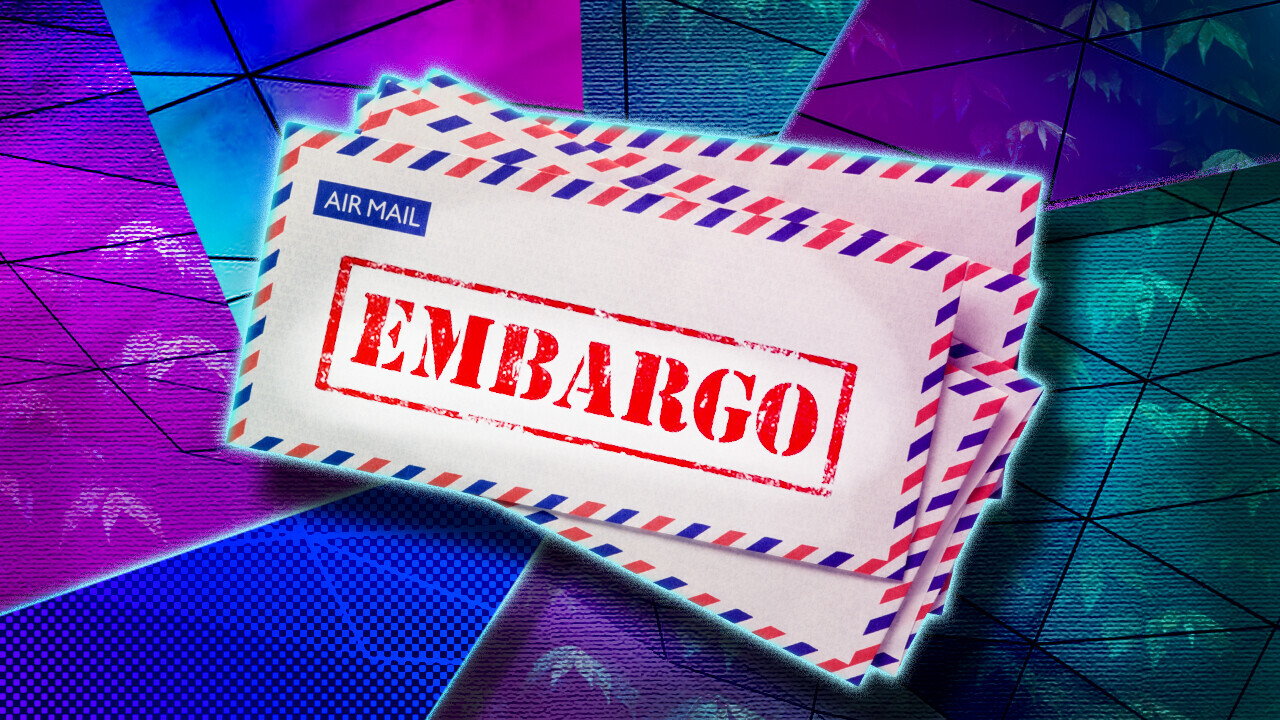
There’s no denying it: the trusty embargo remains a positive and productive tool for professionals on both sides of the press-PR divide. If anything, embargoes have only become more important in recent years, and they’re certainly not going anywhere.
Why? It’s simple. Virtually every industry that depends on new releases and new information to push its news cycle forward makes use of the embargo. This includes arts and entertainment, publishing, science and medicine, gaming, and, of course, tech.
Whether B2B or B2C, large corporation or startup, tech PR relies on embargos to manage constantly changing product release schedules and updates. This is an industry that likes to keep things under wraps — if not totally secret — until launch day, and that requires a dizzying amount of coordination, calendars, and planning to make happen.
It also requires real relationships with journalists. It’s no secret that good ol’ fashioned human relationships are key to getting your story in front of the public — whether or not it’s embargoed.
But simultaneously juggling multiple journalist relationships while preparing a big PR push comes with its own set of challenges. That’s where the embargo comes in.
Embargoes are valuable in part because they prevent inadvertent favoritism. Embargoes allow every journalist you pitch an opportunity to cover your news at the same time, meaning no publication feels like they’re starting in second place.
Top-tier publications naturally want to publish first, but embargos make sure nothing is announced before it’s ready and that all journalists pitched have the same amount of time (and breathing room) to cover, no matter where they work.
Journalists will not only welcome your embargoed scoops, but cooperate with you if you treat them like actual people with specific beats and use only the embargos you absolutely need. When used correctly, embargos give the right journalists time to write the kind of coverage you want and do it well.
Avoid opening a communication channel with a journalist you’ve never worked with before with an embargo. There’s no good way to soften the but-what-can-you-do-for-me implied in that kind of unsolicited introduction.
Learn to prioritize and personalize. In other words, know who you’re talking to.
my favorite kind of PR emails are the ones telling me I’m under embargo for some information that I didn’t ask for and have no interest in knowing
— Dylan Hafer (@thedylanhafer) April 30, 2021
First things first: does the journalist you’re pitching accept embargos? If they do, they may want all the information up front, or they may prefer to get a quick primer before agreeing to anything. If you’re not sure, ask. Don’t guess.
No matter which publications you want to embargo, you should be mindful of the constraints of their editorial calendar. No dropping an embargo on a reporter two days before it lifts. Yours is never the only story a writer is working on, and 48 hours from embargoed press release to publication just isn’t going to cut it.
It may also have the inadvertent effect of making you look both disorganized and inconsiderate of their time. Try two weeks instead.
Know when it’s news, know when it’s not
In my experience, startups sometimes struggle to distinguish between what is promotional and what is truly newsworthy. This is totally understandable, as it can be tricky to tell when new developments are happening quickly inside your business.
It’s nonetheless a crucial distinction if you’re going to keep journalists on your side and not stuff their inboxes with unnecessary embargos.
Be considerate by being discerning and realistic. At its heart, the embargo is about keeping things quiet, so only embargo news items that are tied to a specific date and that journalists will need additional time to research and write.
Nurturing your relationships with journalists means valuing their time and not treating every single item of your public-facing strategy as uniquely precious.
This means deciding what’s truly newsworthy rather than promotional, then only embargoing the most important newsworthy developments. This includes brand new models and launches, top-to-bottom software overhauls, and game-changing funding announcements with lots of zeros.
High-profile partnerships that coincide with a previously unseen special edition version of your product? Sure. High-profile endorsements and big awards? Those are no doubt wonderful to have, but they land firmly in the promotional camp.
Calling an embargo truce
It’s no accident that despite some determined detractors, the embargo has held on. Part of the reason for that is practical. Startups and tech businesses deal with time-sensitive information by nature, and an evolving effort to prevent leaks will always be part and parcel of this industry.
The best communications people for tech startups and tech giants understand this, and public relations for any industry will always depend on relationships.
That’s why a little courtesy works wonders when it comes to embargoes. Eager startups chomping at the bit can sometimes struggle to see the forest for the trees when trying to get the public excited about their story. Journalists, in turn, can (not unjustifiably) find startups’ public relations efforts a little too persistent or impersonal.
Consider both sides of this coin when deciding what and who to embargo, and scrap the mass blast while you’re at it. It’s no PR industry secret that this strategy is the surefire way to get actual results, delivered when you want them, without making any enemies along the way.
Get the TNW newsletter
Get the most important tech news in your inbox each week.





